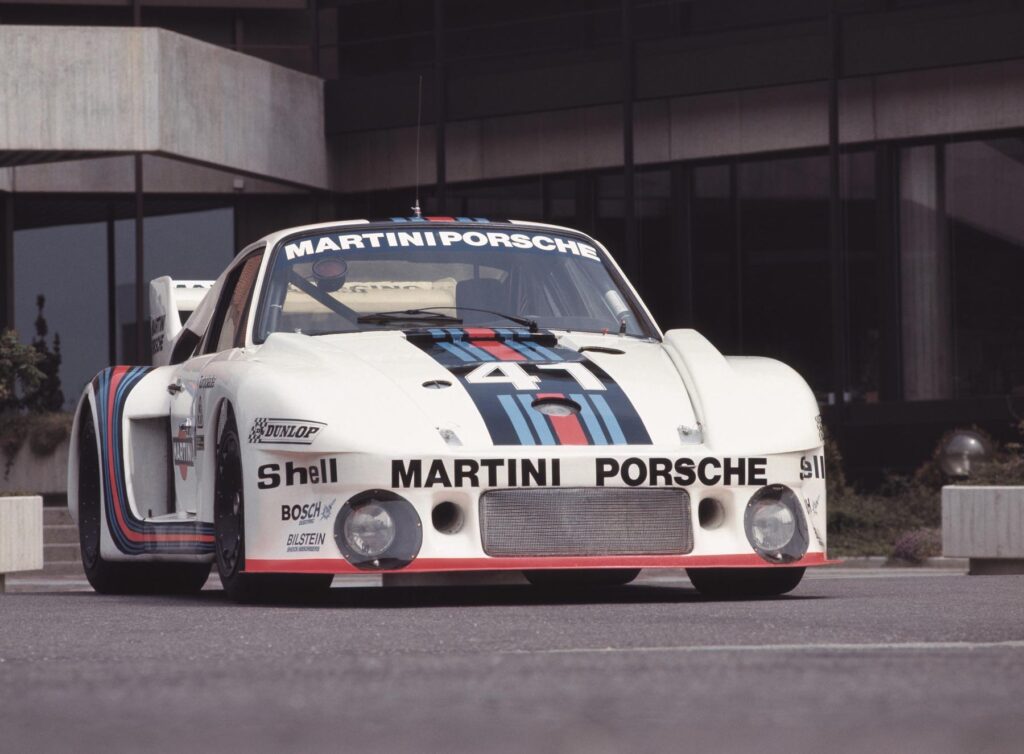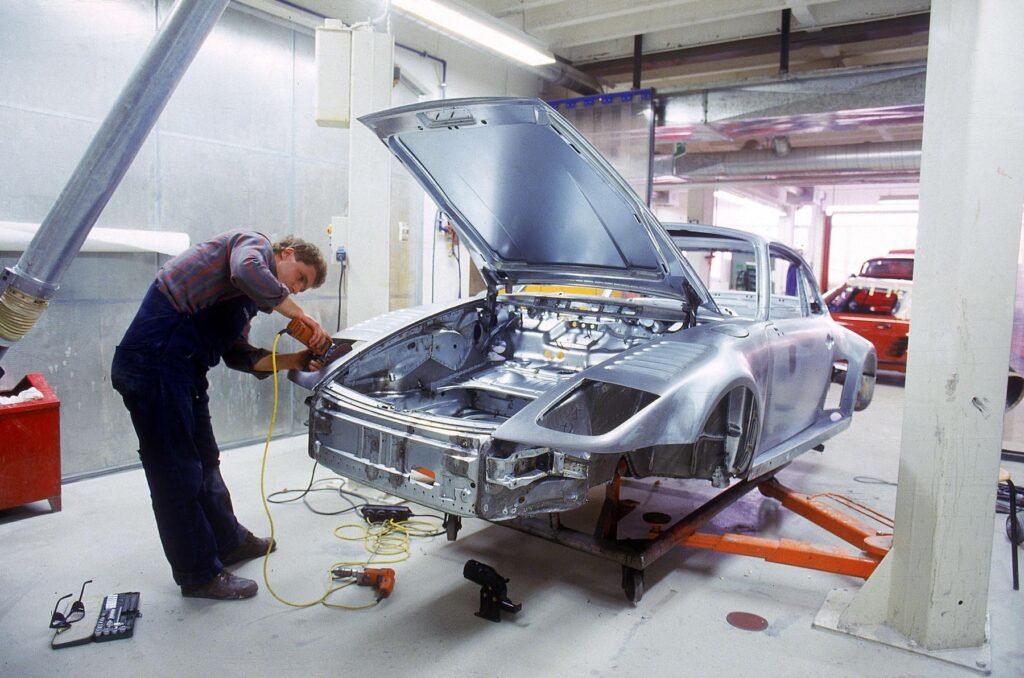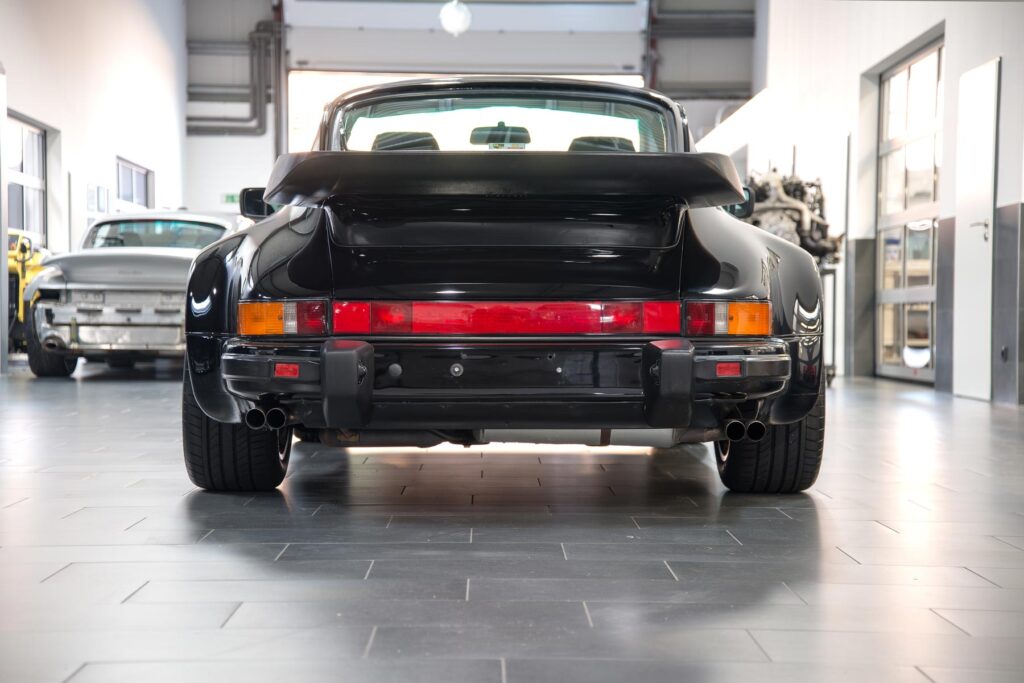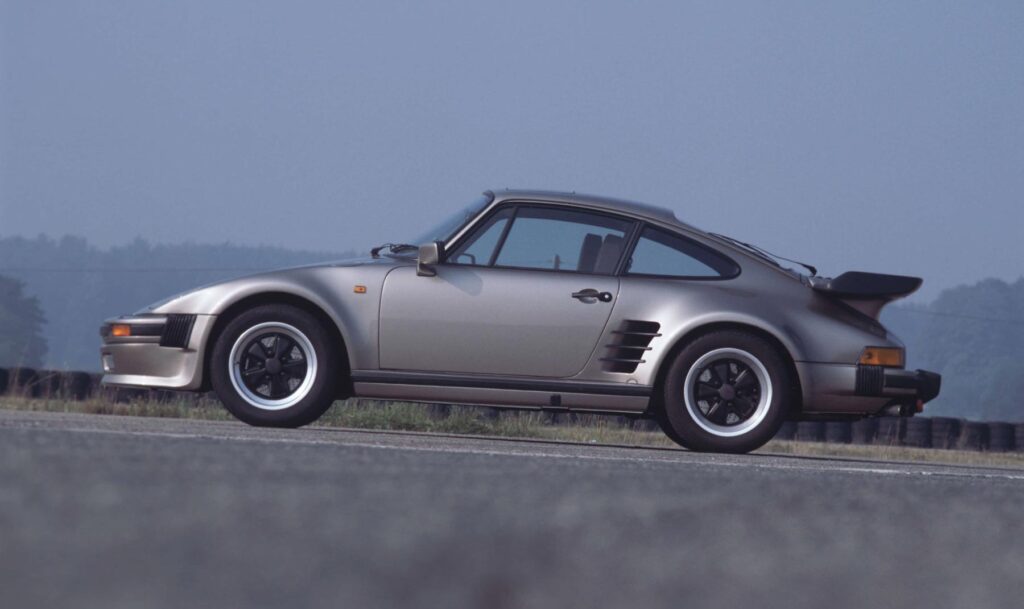Special models
Performance upgrade and slant nose for the Porsche 911 (930) Turbo
Porsche 911 (930) Turbo Coupé in slant nose version – © Porsche Archiv.
Let’s think back to a wonderful time when electric mobility and bans on combustion engines were not yet being discussed. Between 1976 and 1986, the legendary Porsche 935 sports car caused a furore on the most important international racetracks. It won the one-make world championship for Porsche four times in a row.
He dominated the 12 Hours of Sebring several times, as well as the 24 Hours of Daytona. In Le Mans, it emerged as the class winner. No other production-based racing car has achieved so many successes.

So it’s no wonder that many Porsche drivers wanted the characteristic slant nose look of the 935 for their 911 (930) Turbo.
From the 1983 model year onwards, the Porsche repair department under the direction of Rolf Sprenger offered a so-called slant nose for the turbo-wide body on request.

Conversion work on the bodyshell of the slant nose – © Porsche Archive
This meant that the full rust protection and the factory warranty could be retained. On the slant nose version, the front torpedo wings were replaced with flat wings with the folding headlights from the Porsche 944. In addition, a modified front spoiler with integrated oil cooler was installed. Optional sill panelling and air intakes in the rear wings were also available, which served to provide more effective brake ventilation.

Completion of a 911 (930) Turbo Targa in the slant nose version © Porsche Archive
But that was not all, because the Porsche 935 was also on the racetracks with significantly increased engine power.
From the 1983 model year, the Porsche special requests department, which was later renamed Porsche Exclusive, offered a power increase to 330 hp for the 911 Turbo. This was called the “WLS factory performance upgrade”. Visually, the performance-enhanced vehicles could be recognised by a four-pipe exhaust system.

The turbo kit also included a larger turbocharger and an optimised intercooler. With the kit, the 911 Turbo WLS was able to accelerate to 100 km/h in just 5.2 seconds and reached a top speed of 270 km/h. Performance-enhanced vehicles with the flat body were even 275 km/h fast. Porsche also stated the power output of 330 hp quite cautiously, as many vehicles made full use of the legal spread of 5 per cent. Quite a few 911 Turbo WLS reached 340 hp and more on performance test benches.

In the last model year 1989, the 911 Turbo 3.3 received the long-desired 5-speed gearbox. This enabled the WLS vehicles to accelerate to 100 km/h in just 5.0 seconds.
For many customers, a long-cherished dream came true in 1987, as Porsche offered the 911 Turbo as a convertible for the first time.
In combination with the flat body and the performance upgrade, the new price reached over 200,000DM. This made the 911 Turbo Cabriolet one of the most exclusive vehicles in the world.

Turbo - Hans Mezger Edition 2020 with his last interview
In honor of Hans Mezger, the book "911 Turbo Air-Cooled Years 1975-1998" was published in the "Hans-Mezger Edition 2020". It was published in a limited edition of 2020 copies and, in addition to a detailed biography, also contains his last interview, which he gave in October 2019.
LIMITED EDITION Porsche 911 Carrera 3.0 Model Car Hans Mezger
On the first anniversary of Hans Mezger’s death, his private 911 Carrera 3.0 was released as a model car by Minichamps on June 10, 2021 in a limited edition of 2020 units.




